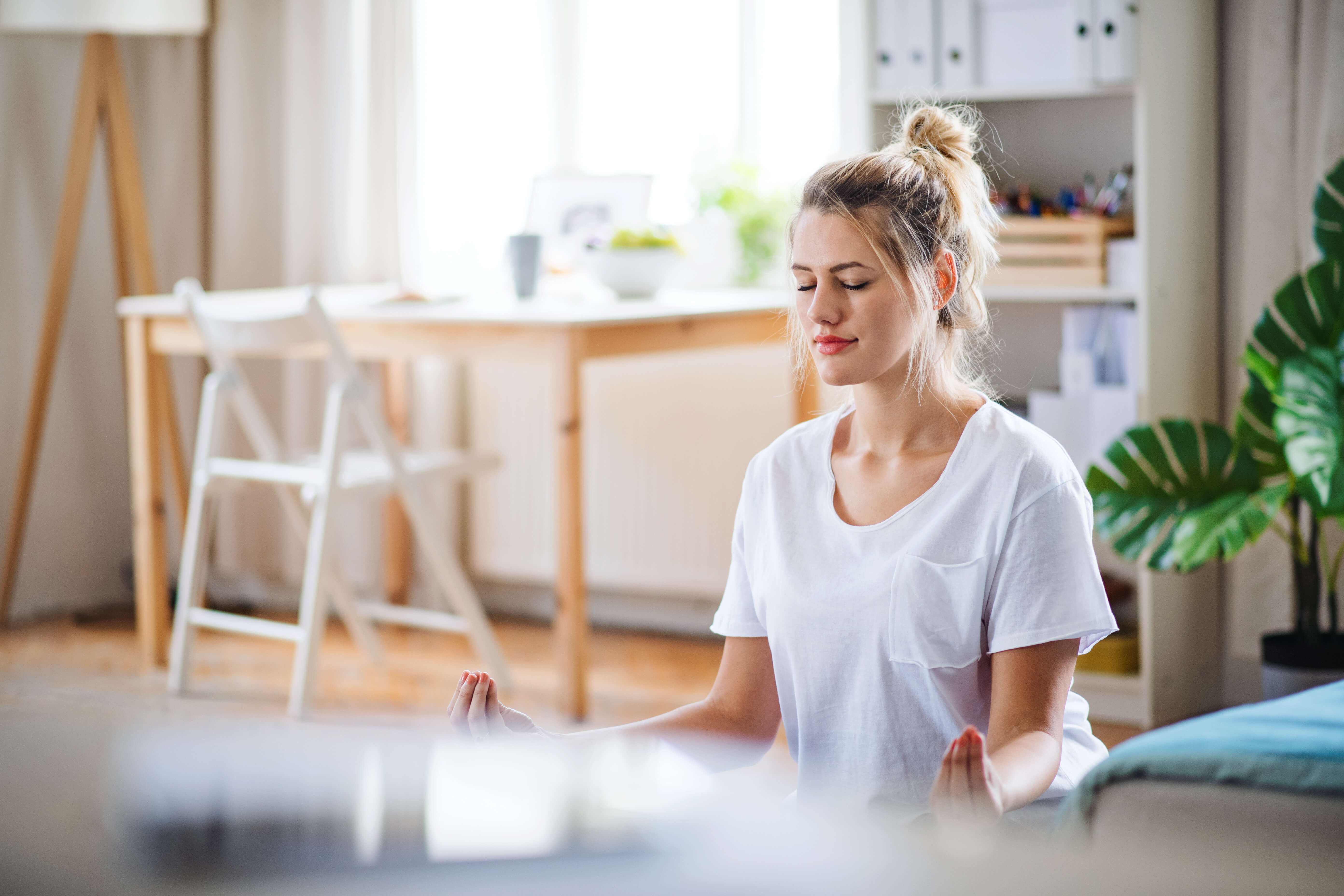Have you ever been fully alive to the moment, undisturbed by thought—in tune with the flow of your experience? Maybe you were at the peak of a concert, watching the sunset with friends or simply kicking back with a good book. There are many ways to arrive at this expansive state—and meditation is one of them.
However, meditation does not require force. And it’s not a case of trying to get rid of all your thoughts and feelings. Rather, it’s a process of acceptance, focus and gentleness.
Over time, cultivating this mindful state can help to reduce anxiety, increase calmness and boost overall health and wellbeing. Research highlights how meditation can benefit a range of conditions, including irritable bowel syndrome, depression, psoriasis, and post-traumatic stress disorder.
The statistics don’t lie. But it’s important to remember that meditation is not a process of trying to get to a destination or eliminate pain. Instead, it’s a way of being with what is—as it is—and watching the waves of experience gradually change over time. As you grow in this way of being, acting with deeper integrity comes naturally, gratitude grows, and the results speak for themselves.
So how can we access this mindful state? We’ll dive deeper into this below.
What is mindfulness?
There are many different types of meditation, and mindfulness meditation is one of them. Mindfulness meditation is a common technique used by beginners and those looking to get the most out of their daily lives. But what actually is mindfulness?
Mindfulness is a state of openness, of non-judgemental awareness. The focus is on what’s occurring, right here, right now. It’s about stepping out of the stream of thought and emotion that we often get wrapped up in by waking up and bringing ourselves back to the moment.
This doesn’t necessarily mean that you need to get rid of all your thoughts or feelings. But it’s not about letting them take over either. It’s simply about paying attention to your experience of life as it unfolds—without judgement.
Now, when you do sit down to meditate, you’ll quickly discover that the mind tends not to sit still for long. And that’s okay; it’s the mind's natural state. Many mindfulness meditations will use a gentle anchor like the breath to bring you back when the mind inevitably wanders. We’ll look at some basic mediations and tips below.
5 step meditation
- Get comfortable. There’s no right or wrong way to sit in meditation, just find a position that you can relax in and feels comfy to you. It could be in a chair, on your bed or on the ground, sitting up or lying down. You might find it helpful to sit with your feet flat on the floor as it can help ground you in the now.
- Close your eyes. Get ready to meditate by letting your eyelids close. You can also simply let your eyes have a soft focus on what’s around you if this feels more natural.
- Breathe in and out naturally. Don’t try to control your breath. Just let it come and go as it is.
- Focus your attention on your breathing. Rest your attention on the in-breath and the out-breath. Notice the sensations in your body. Pay attention to where you feel the breath most clearly; this could be your belly, nostrils, or your chest.
- Gently bring it back to the breath. When paying attention to the breath you’ll find that attention will get lost in feelings, thoughts, emotions or sounds. When you realise this has happened, notice the sensation or thought and let it go. Then, simply bring it back to the in-breath and the out-breath—without judgement.
Make it a habit
Starting any new habit is a process that takes time and work at first. Having a desire to try something new is often not enough for the new habit to actualise. That’s why it’s good to start with small achievable goals—that once completed—will spur you on to repeat the process. Start with two minutes every other day, then build up to three minutes and four. Every step towards the goal counts.
Top tip: Making habits stick is hard. Try to incorporate your meditation with something you already do daily. Schedule time to meditate before you brush your teeth, for example, or first thing when you wake up in the morning prior to the daily demands taking over.
The wandering mind
When you meditate, you might feel frustrated that you’ve trailed off in a train of thought for the last couple of minutes or got caught up on reoccurring thoughts that you can’t seem to get out of your mind. As hard as it is, try not to judge or get lost in self-criticism.
The fact that you’ve noticed your mind wandering is actually a good thing—it means that you're gaining awareness. Meditation can release you from the grips of the inner critic that drains self-worth by returning to the steady, stable breath, ready to take on the moment as it arises. It just takes a little time.
A final word...
“You can’t stop the waves, but you can learn to surf”. Jon Kabat Zinn - Mindfulness expert
Meditation might not stop the waves of life from pulling us in all directions, but it does teach us how to ride the waves of emotion and live with a little more ease.




